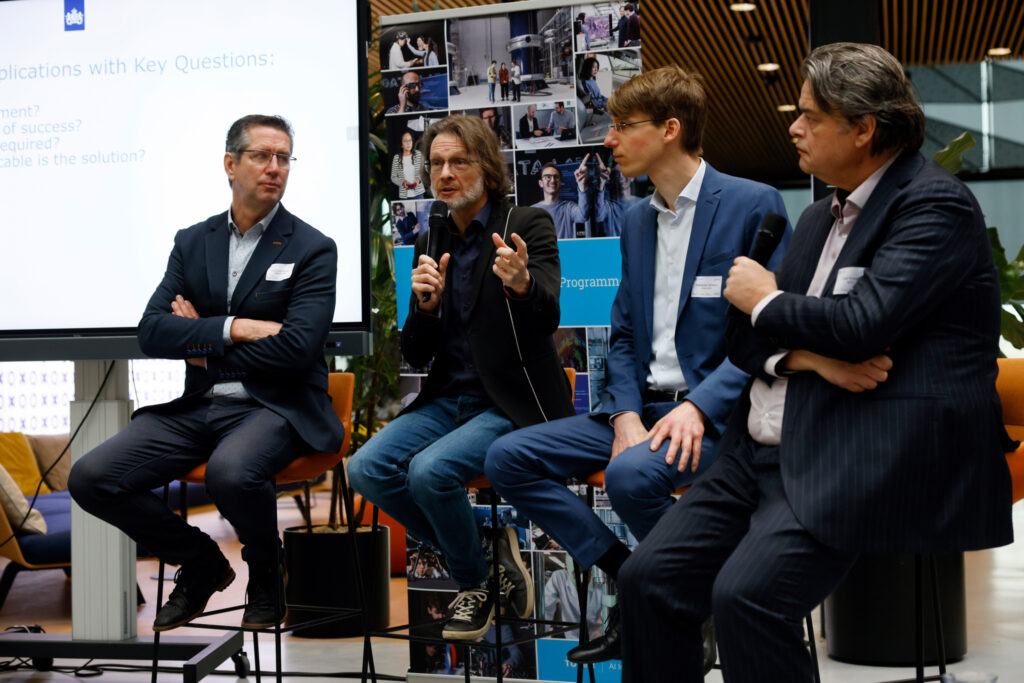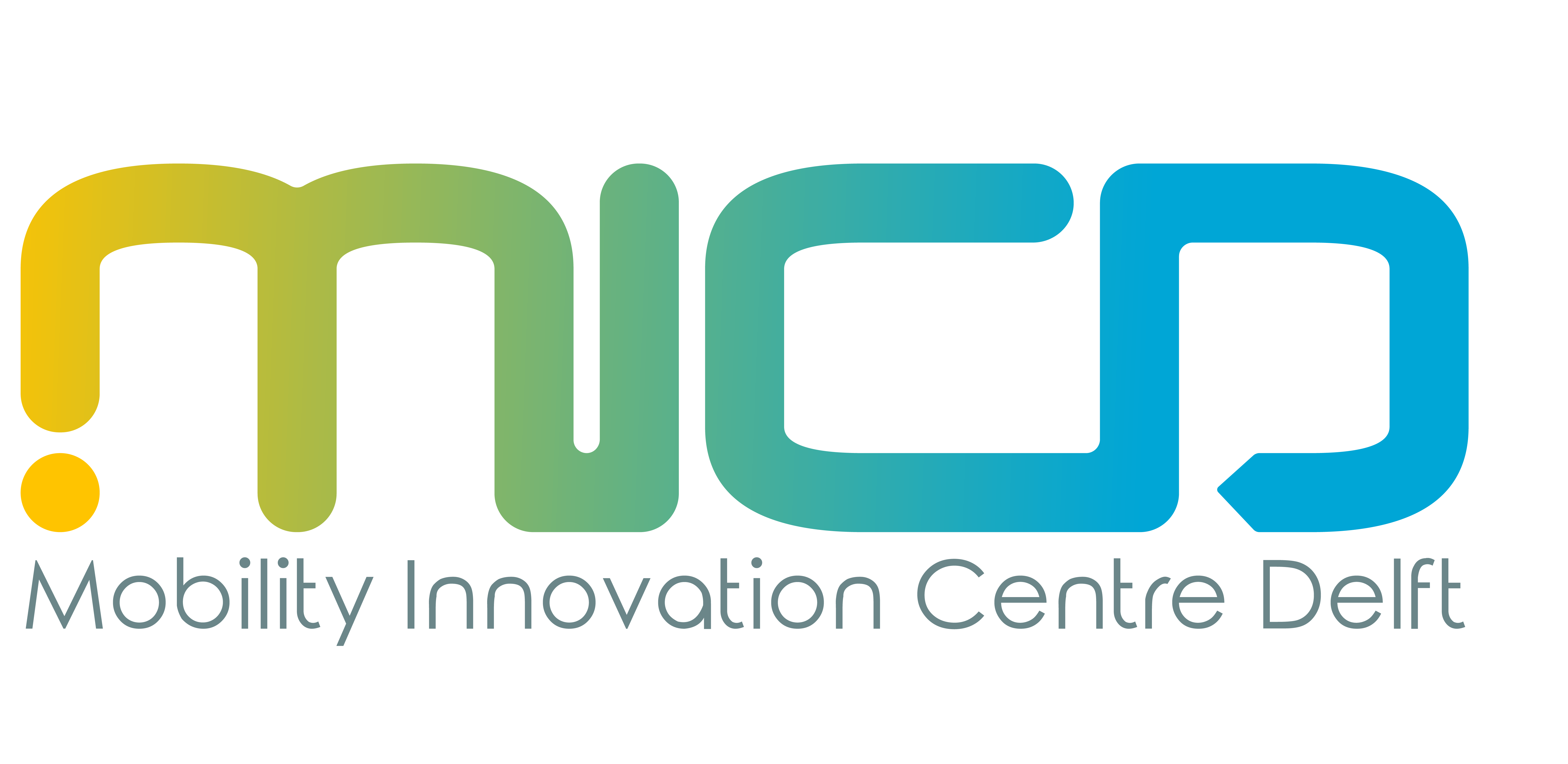Review of the AI & Mobility Day
To address challenges at the intersection of AI & Mobility, the TU Delft | AI Initiative, Mobility Innovation Centre Delft (MICD) and the Transport & Mobility Institute (TMI) brought together leading experts from science, industry and government during TU Delft’s festive Dies Natalis week “Making Sense of Mobility”. Hosted by Mondai, the AI & Mobility Day on January 17th, was about shaping the future of AI in mobility.
Serge Hoogendoorn (TU Delft Transport & Mobility Institute), Sascha Hoogendoorn-Lanser (Mobility Innovation Centre Delft), Geert-Jan Houben (TU Delft AI Initiative), and Inald Lagendijk (AIC4NL) opened the event by introducing the theme of the day and presenting interesting examples of working areas within AI & Mobility.
The main challenge of the day was “How do we tackle the wicked problem of designing, planning and operating a sustainable, resilient and fair mobility system?”, and the main question of the day was “Is AI the ‘Swiss Army Knife’ for solving the wicked problem of designing, planning and operating a sustainable and resilient mobility system?”
Crowd management and automated driving
Marco Hennipman (Siemens Mobility) and Emir Demirović (Faculty of EEMCS, XAIT Lab) presented how AI can be used for novel mobility service, and discussed evidence-based trust in AI. Mark Hünneman (SAIL), Eelco Thiellier (SAIL), and Yanan Xin (Faculty of CEG, DAIMoND Lab) discussed crowd management (and monitoring), the risks, planning and the role of AI, and how it can be applied for events and in the city of Amsterdam.
The event continued with an engaging panel discussion featuring Holger Caesar (Faculty of ME, ELLIS), Edwin Nas (RDW), Arkady Zgonnikov (Faculty of ME, HERALD Lab) and Simeon Calvert (Faculty of CEG, CityAI Lab), with Sascha Hoogendoorn-Lanser as moderator. It began with an explanation of the principles of automated driving, followed by a lively debate. Edwin raised the question of whether AI driving performance could be properly evaluated, noting that AI-driven vehicles are currently prohibited in the EU. Holger suggested that AI systems should undergo a test similar to the driving test required for civilians. This sparked audience questions, such as whether the test should mirror civilian standards and who should define driving styles, for example a 20-year-old versus a 60-year-old. The panel agreed that AI evaluation might need a distinct approach, with driving instructors playing a key role in defining the standards. They also highlighted variations in driving behaviour across countries. Arkady observed that regulators are still far from establishing rules for AI in driving, as they lack a full understanding of the technology.
AI safety and traffic management
The event continued with a presentation by Robert Jan ter Kuile and Nathalie Niessen of Deloitte, discussing the future of mobility accelerated by AI. They presented on AI safety and critical regulations, especially in mobility, emphasising the importance of high-quality data for training AI models effectively.
Alongside the lunch break, a poster and demo market flourished featuring multiple posters showcasing PhD research from the CityAI Lab, DAIMoND Lab, HERALD Lab, RAIL Lab (ICAI) and XAIT Lab. Alongside, several live demos by companies Argaleo and Arane, and TU Delft AI Labs.
AI and traffic management were the focus of the second panel, with Sascha Hoogendoorn-Lanser as moderator. Marco Schreuder (RVS, WVL) started with highlighting current challenges in road traffic management. Olaf Vroom (NDW) proposed that in modern traffic management, the key to progress is not just more data, but smarter ways of transforming, interpreting, and applying it to predict, respond, and adapt in real time. Sebastian Schwinn (d-fine) followed by discussing new insights from application of AI for tunnel safety management. Hans van Lint (TU Delft Faculty of CEG) concluded with a discussion on the need for integration of AI and domain knowledge.
Thereafter, Neil Yorke-Smith (Faculty of EEMCS) and Mahnam Saeednia (Faculty of CEG) challenged the audience to rethink freight mobility in the digital era.
Gerard Kuijlaars (Police Netherlands) and Tina Comes (Faculty of TPM) concluded the day by stressing the importance of ethics and human autonomy in AI-driven decision making, while also highlighting that in case of a crisis, decision-making and sensemaking changes – AI needs to be contextualised.

Summary
Challenges for AI in Mobility
- The adoption of AI in mobility has been slow, limiting its potential to address the many pressing societal challenges in the field.
- Achieving sustainable, resilient, inclusive, healthy, and safe mobility is complex.
- Data limitations and the complexity of mobility systems present challenges for effective AI implementation.
- Overall, AI’s transformative impact on mobility depends on overcoming data limitations, integrating domain expertise, addressing ethical challenges, and fostering collaboration among stakeholders
Opportunities for AI in Mobility
- AI offers huge potential for a sustainable, resilient, and fair mobility system.
- Opportunities exist in the ‘vertical application’ of AI.
- AI can significantly enhance traffic management through smart technologies and data-driven insights.
Important takeaways for AI in Mobility
- Integration of AI with domain knowledge and existing systems is crucial for successful deployment.
- Meaningful human control should be prioritised in the development and implementation of automated driving.
- Ethical concerns, including bias, privacy, and human autonomy, must be carefully addressed.
- Freight mobility needs a digital transformation, incorporating AI-driven analytics for optimisation.
- Responsible AI development and deployment require a human-cantered perspective, addressing ethical considerations and potential biases.
- A collaborative learning community is vital for exploring AI’s potential in mobility while mitigating risks.
